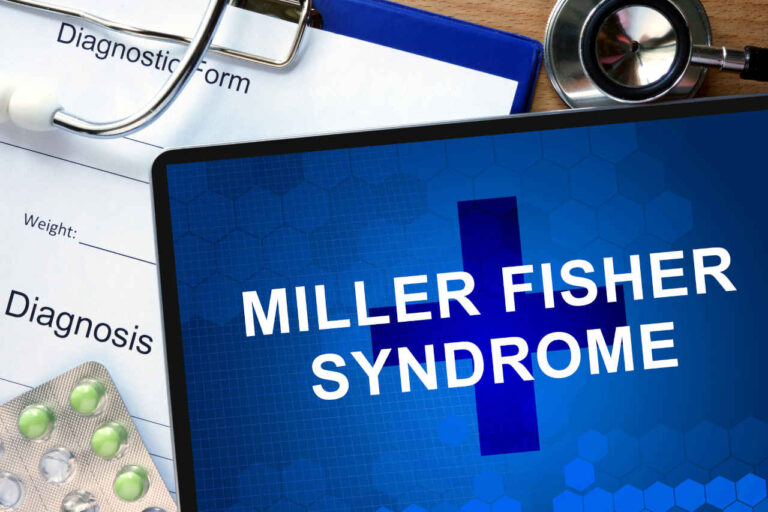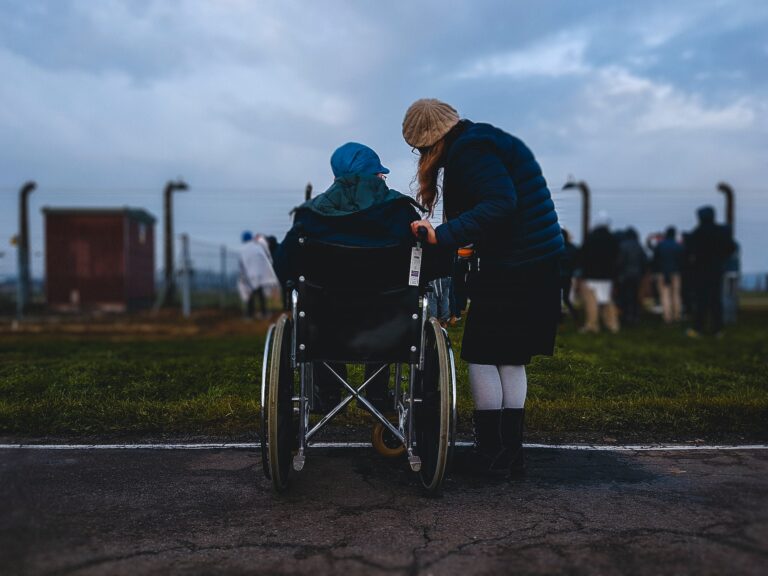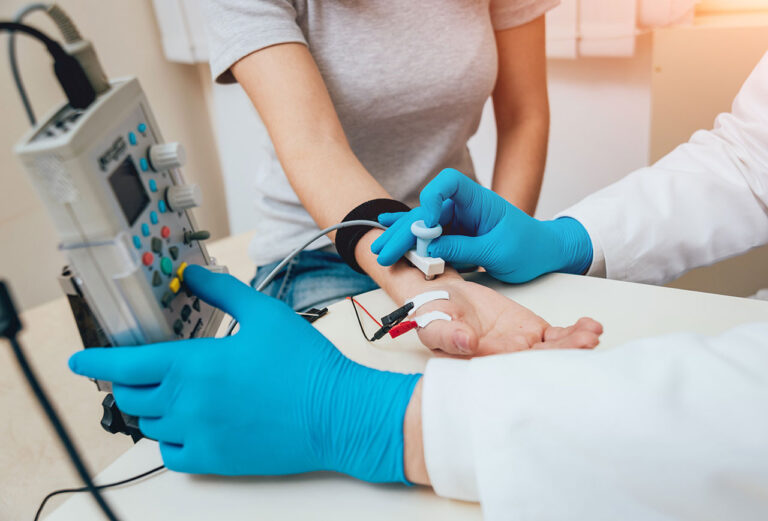
길랭-바레 증후군 (GBS) and 중증 근무력증 (MG) are neurological autoimmune disorders that occur when the body’s immune system starts attacking healthy cells, such as nerves and muscles. GBS and MG both are actually severe but rare conditions that can cause significant physical impairments and even lead to life-threatening complications if left untreated. Although both disease states share some similarities, such as muscle weakness and fatigue, the underlying mechanisms, affected population, symptoms, onset, progression, and treatment approaches differ significantly.
전문가와 상담하세요
공제금 지원에 관하여In this article, we will explain the key differences between GBS and MG, and the available treatments to manage the symptoms of these neurological disorders.
Guillain-Barré Syndrome vs. Myasthenia Gravis: Key Differences
Underlying Mechanism
Guillain-barré syndrome is caused by the immune system attacking the peripheral nerves, which are located outside the brain and control movement and sensation. The immune system produces antibodies that mistakenly target the myelin sheath (a protective covering around the nerves) or the nerve fibers themselves, leading to nerve damage and inflammation. This damage disrupts the transmission of signals from the brain to the muscles and results in muscle weakness and paralysis.
Myasthenia gravis is also caused by an immune system attack. Unlike GBS, in MG, the immune system attacks the neuromuscular junctions which are points where nerve cells connect with the muscles. Typically, nerve cells release acetylcholine (a neurotransmitter) that attaches to its receptor on muscle fibers. The attachment of the acetylcholine to its receptors causes the muscle to contract and produce movement. However, in people with MG, the immune system produces antibodies that destroy or block these receptors on muscle fibers and prevent them from receiving nerve signals (acetylcholine). This leads to muscle weakness and fatigue due to impaired muscle contractions.
Symptoms of Guillain-Barré Syndrome vs. Myasthenia Gravis
The symptoms of GBS and MG differ significantly. The symptoms of GBS usually start with tingling and numbness in the feet and legs that gradually spread to the upper body and arms. Muscle weakness can progress rapidly and sometimes even affect respiratory muscles, leading to paralysis, which can be life-threatening. Other early and severe symptoms may include tingling or numbness in the extremities, vision problems, loss of reflexes, and difficulty in speaking, swallowing, and breathing. These symptoms begin quickly and become worse within hours or days.
Conversely, MG symptoms can vary widely depending on the severity and location of muscle weakness. MG typically presents with fluctuating muscle weakness that affects specific muscles that can be controlled voluntarily. The muscle groups which are severely affected by MG include:
- Eye and eyelid muscles that control eye movement. Approximately 50% of people who suffer from myasthenia gravis experience early symptoms of eye problems such as double vision & one or both eyelids drooping (called ptosis).
- Facial and throat muscles that control facial expressions. Around 15% of individuals with myasthenia gravis experience initial symptoms like changes in facial expressions, double vision, impaired speaking or slurred speech, and difficulty chewing and swallowing.
- Neck and limb muscles usually control the movement of arms, legs, neck, fingers, and hands.
In some cases, the symptoms of MG can be life-threatening, particularly if they affect the muscles that control breathing. Moreover, the weakness in MG tends to worsen with activity and improve with rest.
Susceptible Population
GBS can affect anyone, regardless of age or gender, but it is more common in adults and the geriatric population. On the other hand, myasthenia gravis (MG) can affect people of any gender, race, or ethnicity. It usually affects adult women under the age of 40 and men over the age of 60.
Onset and Progression
The onset and progression of Guillain-barré syndrome vs. myasthenia gravis are also different. GBS often has a sudden and rapid onset, with symptoms reaching their peak within 2 to 3 weeks. After that, it begins to improve. The recovery process takes about several months or even years, depending on the severity of the illness. Some people may experience ongoing symptoms such as weakness, fatigue, and difficulty with coordination even after recovery.
In contrast, MG may have a more gradual onset, with symptoms appearing over a period of weeks or months. The progression of MG can be unpredictable and varies from person to person. Some people may experience mild symptoms that are well-controlled with medication, while others may have severe symptoms that significantly impact their quality of life. In some cases, the symptoms may go into remission for a period of time, only to return later. However, with proper treatment, most people with MG can manage their symptoms and lead normal lives.
공제금 지원 받기
Treatment Info | Get Prior AuthorizationFactors That Trigger GBS and MG
The exact cause of GBS is still unknown, but researchers believe it is triggered by an infection or other illnesses. In many cases, GBS develops a few days or weeks after a respiratory or gastrointestinal infection.
Other factors that can trigger the onset of GBS include;
- Zika virus and COVID-19
- Vaccination, surgery, or trauma
In the case of MG, the exact cause is still unknown, but it is believed to be related to or triggered by various environmental and genetic factors.
Treatment Options for Guillain-Barré Syndrome vs. Myasthenia Gravis
Although there is no cure for GBS and MG, effective treatment strategies can help to improve the symptoms and speed up the recovery time in patients with these conditions. Like the above factors, the treatment approaches for GBS and MG are different.
GBS is typically treated with immunoglobulin therapy or plasma exchange.
Intravenous immunoglobulin therapy involves infusing high-dose antibodies into the bloodstream of the patients. This therapy helps to suppress the immune system and reduce inflammation.
- Plasma exchange involves replacing patients’ blood plasma with donor plasma or a substitute. This helps to remove the antibodies that are attacking the nerves.
In the case of MG, it is typically treated with medications, surgery, and therapies.
- 약물 such as acetylcholinesterase inhibitors or immunosuppressive drugs are used to enhance nerve signaling and reduce the immune system’s attack on the neuromuscular junction.
- Plasmapheresis and intravenous immunoglobulin therapies may benefit MG patients as these therapies remove the antibodies from the blood.
- Thymectomy, a surgical procedure of problematic thymus gland removal, plays a role in rebalancing the immune system and reducing the symptoms.
In conclusion, Guillain-barré syndrome and myasthenia gravis are both neurological autoimmune disorders and share some similarities in their symptoms and manifestations. However, both diseases differ in several ways such as the underlying mechanisms, causes, patterns of muscle weakness, and treatment approaches. Understanding the difference between GBS and MG and early diagnosis can help improve outcomes for those affected by these conditions.
참고문헌:
- Leonhard, S. E., Mandarakas, M. R., De Assis Aquino Gondim, F., Bateman, K., Ferreira, M. E. C., Cornblath, D. R., Van Doorn, P. A., Dourado, M. E., Hughes, R. a. C., Islam, B., Kusunoki, S., Pardo, C. A., Reisin, R., Sejvar, J. J., Shahrizaila, N., Soares, C. N., Umapathi, T., Wang, Y., Yiu, E. M., . . . Jacobs, B. (2019). Diagnosis and management of Guillain–Barré syndrome in ten steps. Nature Reviews Neurology, 15(11), 671–683. https://doi.org/10.1038/s41582-019-0250-9
- Dresser, L., Wlodarski, R., Rezania, K., & Soliven, B. (2021). Myasthenia Gravis: Epidemiology, Pathophysiology and Clinical Manifestations. Journal of Clinical Medicine, 10(11), 2235. https://doi.org/10.3390/jcm10112235
- Nguyen, T. P. (2023, February 7). Guillain Barre Syndrome. StatPearls – NCBI Bookshelf. https://www.ncbi.nlm.nih.gov/books/NBK532254/#:~:text=Guillain%2DBarr%C3%A9%20syndrome%20(GBS),that%20can%20progress%20to%20paralysis.
- Yuki, N., & Hartung, H. (2012). Guillain–Barré Syndrome. The New England Journal of Medicine, 366(24), 2294–2304. https://doi.org/10.1056/nejmra1114525
- Gilhus, N. E., Tzartos, S. J., Evoli, A., Palace, J., Burns, T. M., & Verschuuren, J. J. (2019). Myasthenia gravis. Nature Reviews Disease Primers, 5(1). https://doi.org/10.1038/s41572-019-0079-y
- Freshimona, R., Wijaya, A., Aryatama, Djojoatmodjo, S., Liman, J., & Sari, P. (2021). P-PN018. The co-occurrence of myasthenia gravis and Guillain-Barré Syndrome: A case report. Clinical Neurophysiology, 132(8), e111. https://doi.org/10.1016/j.clinph.2021.02.267
 Intravenous immunoglobulin therapy
Intravenous immunoglobulin therapy











